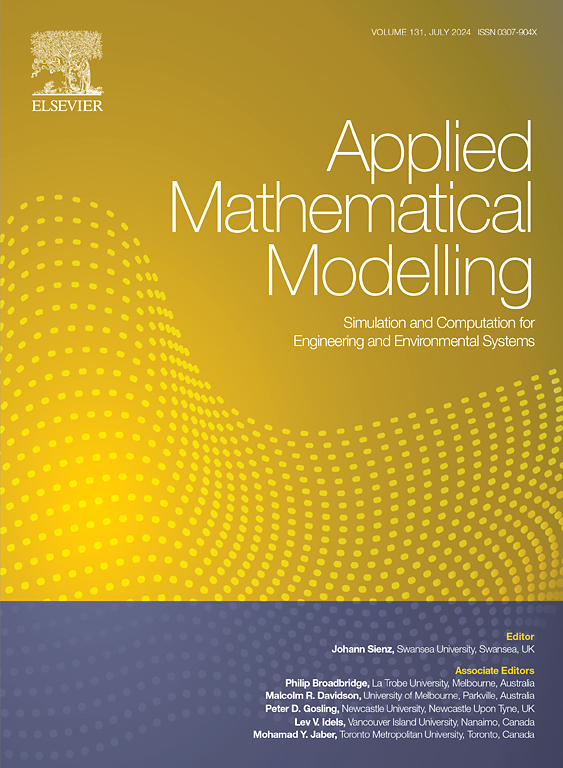A novel adaptive dynamic optimal balance control method for wheel-legged robot
IF 4.4
2区 工程技术
Q1 ENGINEERING, MULTIDISCIPLINARY
引用次数: 0
Abstract
The wheel-legged robots combine efficient and fast wheeled locomotion with the terrain-adaptive legged locomotion. Inspired by reinforcement learning and adaptive dynamic programming, a novel dynamic optimal balance control method is proposed for wheel-legged robots on uneven terrains. First, the virtual leg length is solved according to the kinematics model of the five-link closed-chain mechanism. In addition, a simplified wheel-legged spring-loaded inverted pendulum model is established to determine the linear state-space expression of the floating-base, virtual leg, and driving wheel. Second, a fast iterative algorithm built upon adaptive dynamic programming and optimal gain matrix is introduced. Using the initial gain matrix and an initial state vector, the online policy iteration learns the initial state data set generated by external disturbances, and the steps of policy evaluation and policy improvement are repeatedly implemented by Kleinman's algorithm. Subsequently, the virtual support force is controlled by the composite control framework for the length of the virtual leg with spring-damping characteristics and roll angle. The input torque for each hip joint is calculated using the virtual model control mapping technology. Finally, the robustness and adaptability of the proposed framework are verified through simulations. This paper presents a novel control method for the future application of wheel-legged robot in complex scenarios.
轮足机器人的新型自适应动态优化平衡控制方法
轮足机器人结合了高效快速的轮式运动和地形适应性的足式运动。受强化学习和自适应动态编程的启发,本文提出了一种新颖的轮足机器人在不平地形上的动态优化平衡控制方法。首先,根据五连杆闭链机构的运动学模型求解虚拟腿长。此外,还建立了简化的轮足弹簧倒立摆模型,以确定浮动基座、虚拟腿和驱动轮的线性状态空间表达式。其次,介绍了一种基于自适应动态编程和最优增益矩阵的快速迭代算法。利用初始增益矩阵和初始状态向量,在线策略迭代学习由外部干扰产生的初始状态数据集,并通过 Kleinman 算法反复执行策略评估和策略改进步骤。随后,虚拟支撑力由具有弹簧阻尼特性和滚动角的虚拟腿长度复合控制框架控制。利用虚拟模型控制映射技术计算每个髋关节的输入扭矩。最后,通过仿真验证了所提框架的鲁棒性和适应性。本文提出了一种新颖的控制方法,可用于未来复杂场景中轮足机器人的应用。
本文章由计算机程序翻译,如有差异,请以英文原文为准。
求助全文
约1分钟内获得全文
求助全文
来源期刊

Applied Mathematical Modelling
数学-工程:综合
CiteScore
9.80
自引率
8.00%
发文量
508
审稿时长
43 days
期刊介绍:
Applied Mathematical Modelling focuses on research related to the mathematical modelling of engineering and environmental processes, manufacturing, and industrial systems. A significant emerging area of research activity involves multiphysics processes, and contributions in this area are particularly encouraged.
This influential publication covers a wide spectrum of subjects including heat transfer, fluid mechanics, CFD, and transport phenomena; solid mechanics and mechanics of metals; electromagnets and MHD; reliability modelling and system optimization; finite volume, finite element, and boundary element procedures; modelling of inventory, industrial, manufacturing and logistics systems for viable decision making; civil engineering systems and structures; mineral and energy resources; relevant software engineering issues associated with CAD and CAE; and materials and metallurgical engineering.
Applied Mathematical Modelling is primarily interested in papers developing increased insights into real-world problems through novel mathematical modelling, novel applications or a combination of these. Papers employing existing numerical techniques must demonstrate sufficient novelty in the solution of practical problems. Papers on fuzzy logic in decision-making or purely financial mathematics are normally not considered. Research on fractional differential equations, bifurcation, and numerical methods needs to include practical examples. Population dynamics must solve realistic scenarios. Papers in the area of logistics and business modelling should demonstrate meaningful managerial insight. Submissions with no real-world application will not be considered.
 求助内容:
求助内容: 应助结果提醒方式:
应助结果提醒方式:


